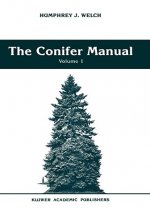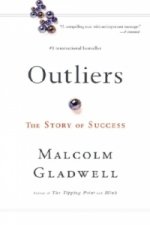
Kód: 01975215
Landscapes, Genomics and Transgenic Conifers
Autor Claire G. Williams
What is the future of genetically modified (or transgenic) conifer plantations? The content of this edited volume Landscapes, Genomics and Transgenic Conifers addresses this question directly - and indirectly - using language draw ... celý popis
- Jazyk:
 Angličtina
Angličtina - Väzba: Brožovaná
- Počet strán: 262
Nakladateľ: Springer, 2010
- Viac informácií o knihe

249.24 €

Skladom u dodávateľa v malom množstve
Odosielame za 12 - 15 dní
Potrebujete viac kusov?Ak máte záujem o viac kusov, preverte, prosím, najprv dostupnosť titulu na našej zákazníckej podpore.
Pridať medzi želanie
Mohlo by sa vám tiež páčiť
-

Conifer Manual
273.94 € -

Manual of Cultivated Conifers
71.44 € -

Landscape Genetics - Concepts, Methods, Applications
90.77 € -

Pierre-Joseph Redouté: The Book of Flowers
26 € -15 % -

Spell of the Sensuous
21.75 € -14 % -

Numerals and Arithmetic in the Middle Ages
242.77 € -

Rhetorics of Religion in American Fiction
149.46 € -

Thunder Doesn't Live Here Anymore
38.75 € -

Lyra's Oxford
10.01 € -22 % -

Abba The Quiz Book
12.64 € -

King of Scars
12.64 € -5 % -

Conifers
173.34 € -

Radical Candor
8.39 € -16 % -

Wolf Hall
9.40 € -21 % -

Cellular and Molecular Biology of Filamentous Fungi
275.35 € -

Fire in Ecosystems of Boreal Eurasia
273.94 € -

Tenth Muse
164.64 € -

Indoor Air Pollution
81.35 € -

Ecology and Biogeography of Pinus
88.54 € -

EISS Yearbook 1980-1981 Part II / Annuaire EISS 1980-1981 Partie II
70.02 € -

Gustave Dore (1832-1883)
48.67 € -13 % -

Financial Management and Comptroller - Scholar's Choice Edition
22.25 € -

Pinhoe Egg
8.90 € -23 % -

L'AVI OS TÈ UN SECRET
15.78 € -4 % -

LEGO® City - Malblock
6.67 € -

Madame Pylinska et le secret de Chopin
9.91 € -5 % -

Břetislav Pojar
5.56 € -6 % -

Was ist eine gerechte Gesellschaft?
14.06 € -5 %
Darujte túto knihu ešte dnes
- Objednajte knihu a vyberte Zaslať ako darček.
- Obratom obdržíte darovací poukaz na knihu, ktorý môžete ihneď odovzdať obdarovanému.
- Knihu zašleme na adresu obdarovaného, o nič sa nestaráte.
Viac informácií o knihe Landscapes, Genomics and Transgenic Conifers
Nákupom získate 623 bodov
 Anotácia knihy
Anotácia knihy
What is the future of genetically modified (or transgenic) conifer plantations? The content of this edited volume Landscapes, Genomics and Transgenic Conifers addresses this question directly - and indirectly - using language drawn from policy, forest history, genomics, metabolism, pollen dispersal and gene flow, landscape ecology, evolution, economics, technology transfer and regulatory oversight. Although the book takes its title from a Nicholas School Leadership forum held November 17-19, 2004 at Duke University, its de novo contents move past the forum s deliberations. The result is a trans-disciplinary book composed of 14 chapters written by a total of 31 authors working in North America, South America, Europe and Africa. §The book is written for policy experts, life scientists, government and business leaders, biotechnology writers and activists. Few decision-makers realize the unprecedented degree to which transgenic technology is now possible for forests on a commercial scale. Only a handful of the 550 living conifer species is used for commodity value and even fewer species are being developed for transgenic plantations. Transgenic field trials started within the last decade but no transgenic pine plantations exist in 2005. But emergence of transgenic forest trees is still so recent that dialogue about the pros and cons is confined to the scientific community. And dialogue must move out into the public domain. §So little opportunity remains for opening public dialogue. The pursuit of transgenic research for forest trees is principally corporate so novel forest tree phenotypes are created as a means to increase shareholder value for investor companies. And while potential benefits will accrue to shareholders, ecological risks for certain transgenic traits are likely to be shared due to long-distance gene flow and inadequate bioconfinement measures. So this is a question riddled with tension. Without public deliberation, we should expect alienation of several interest groups. Alienation will lead to heightened clashes in the public policy arena or even radical environmental action. But how to move dialogue on transgenic forests forward? One must re-frame the issues behind transgenic conifer plantations. §The goal of this volume is to provide content for public deliberations about the genetic composition of future forests. Its Section I is composed of provocative and opposing views on the question of transgenic conifer plantations. Sections II and III follow with research advances on relevant conifer genomics and ecology research, respectively. Section IV forecasts rates of technology adoption for different case studies. Finally, Section V compares the status of regulatory oversight of transgenic forest trees between Canada and the United States. But will the book fulfil its goal? The burden of the answer lies with its readers. Will readers act or will transgenic forests be seen as too remote or simply too rural to bother with the angst of public deliberation?The book is written for policy experts, life scientists, government and business leaders, biotechnology writers and social activists. Few decision-makers realize the unprecedented degree to which transgenic technology is now possible for forests on a commercial scale. Only a handful of the 550 living conifer species is used for commodity value and even fewer species are being developed for transgenic plantations. Transgenic field trials started within the last decade but no transgenic pine plantations exist in 2005. But emergence of transgenic forest trees is still so recent that dialogue about the pros and cons is confined to the scientific community. And dialogue must move out into the public domain.§The goal of this volume is to provide content for public deliberations about the genetic composition of future forests. Its Section I is composed of provocative and opposing views on the question of transgenic conifer plantations. Sections II and III follow with research advances on relevant conifer genomics and ecology research, respectively. Section IV forecasts rates of technology adoption for different case studies. Finally, Section V compares the status of regulatory oversight of transgenic forest trees between Canada and the United States.What is the future of genetically modified (or transgenic) conifer plantations? The content of this edited volume Landscapes, Genomics and Transgenic Conifers addresses this question directly - and indirectly - using language drawn from policy, forest history, genomics, metabolism, pollen dispersal and gene flow, landscape ecology, evolution, economics, technology transfer and regulatory oversight. Although the book takes its title from a Nicholas School Leadership forum held November 17-19, 2004 at Duke University, its de novo contents move past the forum s deliberations. The result is a trans-disciplinary book composed of 14 chapters written by a total of 31 authors working in North America, South America, Europe and Africa. §The book is written for policy experts, life scientists, government and business leaders, biotechnology writers and activists. Few decision-makers realize the unprecedented degree to which transgenic technology is now possible for forests on a commercial scale. Only a handful of the 550 living conifer species used for commodity value and even fewer species are being developed for transgenic plantations. Transgenic field trials started within the last decade but no transgenic pine plantations exist in 2005. But emergence of transgenic forest trees is still so recent that dialogue about the pros and cons is confined to the scientific community. And dialogue must move out into the public domain. §The goal of this volume is to provide content for public deliberations about the genetic composition of future forests. Its Section I is composed of provocative and opposing views on the question of transgenic conifer plantations. Sections II and III follow with research advances on relevant conifer genomics and ecology research, respectively. Section IV forecasts rates of technology adoption for different case studies. Finally, Section V compares the status of regulatory oversight of transgenic forest trees between Canada and the United States. But will the book fulfil its goal? The burden of the answer lies with its readers. Will readers act or will transgenic forests be seen as too remote or simply too rural to bother with the angst of public deliberation?
 Parametre knihy
Parametre knihy
Zaradenie knihy Knihy po anglicky Economics, finance, business & management Business & management Management & management techniques
249.24 €
- Celý názov: Landscapes, Genomics and Transgenic Conifers
- Autor: Claire G. Williams
- Jazyk:
 Angličtina
Angličtina - Väzba: Brožovaná
- Počet strán: 262
- EAN: 9789048169863
- ISBN: 9048169860
- ID: 01975215
- Nakladateľ: Springer
- Hmotnosť: 494 g
- Rozmery: 240 × 160 × 15 mm
- Dátum vydania: 23. November 2010
Obľúbené z iného súdka
-

High Output Management
17.29 € -9 % -

Principles
25.69 € -21 % -

The Five Dysfunctions of a Team
22.66 € -18 % -

The Making of a Manager
15.17 € -29 % -

Turn The Ship Around!
12.03 € -16 % -

Hooked
12.84 € -23 % -

Inspired - How to Create Tech Products Customers Love, 2nd Edition
30.05 € -2 % -

Give and Take
10.11 € -24 % -

Multipliers, Revised and Updated
11.73 € -23 % -

Devil Take the Hindmost
16.38 € -22 % -

Traction
17.70 € -16 % -

The 4-Hour Workweek
23.06 € -17 % -

The Daily Stoic
15.88 € -14 % -

12 Week Year - Get More Done in 12 Weeks than Others Do in 12 Months
20.63 € -23 % -

Outliers
9.10 € -20 % -

Way, the Enemy, and the Key
41.08 € -25 % -

Leadership BS
31.46 € -6 % -

Managing Change in Organizations
34.20 € -4 % -

Triggers
11.22 € -16 % -

Scrum
12.13 € -23 % -

7 Habits of Highly Effective People
22.15 € -

Drive
12.13 € -23 % -

New One Minute Manager
10.62 € -20 % -

Wooden on Leadership
26 € -23 % -

Spiral Dynamics - Mastering Values, Leadership and Change
42.29 € -

Leaders Eat Last
16.08 € -

The 7 Habits of Highly Effective People
24.99 € -18 % -

How Women Rise
11.02 € -23 % -

Dealing with Difficult People (HBR Emotional Intelligence Series)
16.99 € -19 % -

Essentialism
13.35 € -20 % -

Million Dollar Habits
19.42 € -18 % -

Unlimited Memory
16.99 € -19 % -

Standard for Portfolio Management
72.35 € -3 % -

Primal Leadership
24.28 € -15 % -

Managing Transitions
19.22 € -20 % -

I Dare You!
4.65 € -23 % -

Executive Coaching with Backbone and Heart - A Systems Approach to Engaging Leaders with Their Challenges 2e
68.10 € -

27 Challenges Managers Face
34.20 € -

Economist Guide to Financial Management 3rd Edition
25.69 € -

It's Not the How or the What but the Who
22.46 € -27 % -

Millionaire Fastlane
26.61 € -

Extreme Ownership
23.77 € -21 % -

Leaders Eat Last
11.43 € -20 % -

The Coaching Habit
17.50 € -4 % -

Professional Product Owner, The
32.98 € -3 % -

It's the Manager
38.95 € -4 % -

Goal
20.94 € -19 % -

Co-Active Coaching
36.42 € -3 % -

The 10X Rule
22.66 € -18 %
Osobný odber Bratislava a 2642 dalších
Copyright ©2008-24 najlacnejsie-knihy.sk Všetky práva vyhradenéSúkromieCookies


 21 miliónov titulov
21 miliónov titulov Vrátenie do mesiaca
Vrátenie do mesiaca 02/210 210 99 (8-15.30h)
02/210 210 99 (8-15.30h)